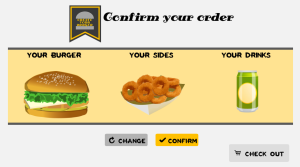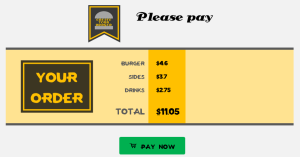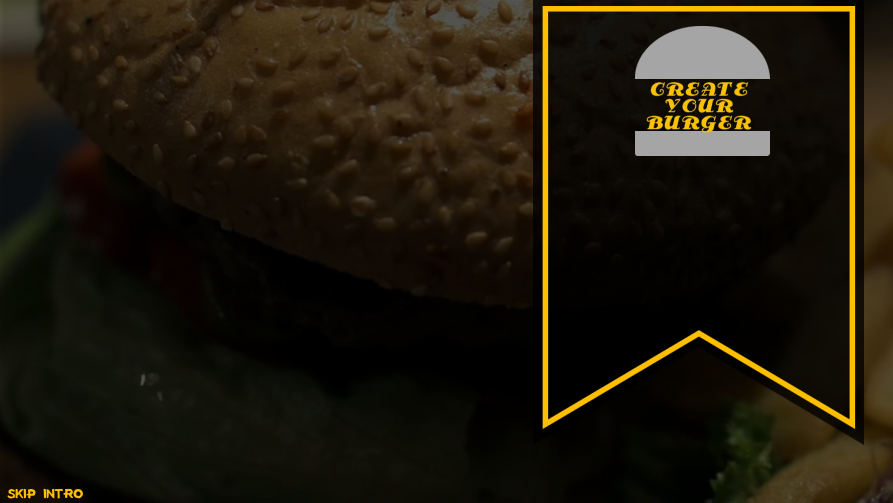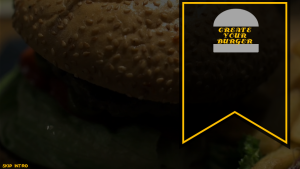For the record, I’m not a huge fan of fast food. But, I have young kids. Ipso facto, we occasionally find ourselves in that place that our kids call ‘the hamburger place’. The kids like the McFood, but they LOVE the new automated ordering systems.
Fast, cheap inspiration
In Australia, the hamburger place has introduced numerous big, colourful touch-screens near the entryway of each store. These screens are actually kiosks. They let you tap-in your order, pay with plastic and then pick-up your tray when your number is called.
My kids love the idea of using these kiosks. I quickly became a fan of the functionality. In my experience, they worked PERFECTLY—and that is not something I say lightly.
As soon as I used it, my first thought was: I wonder if I can build something like this in Storyline?
The answer, of course, is yes.
Click Play below to check out the live demo. Then, read on to find out how it was put together.

Automated ordering – design your dinner
I’m not currently interested in slinging burgers, and I’m not about to go into the cryptographic protocols required to create a secure payment system. What I’m really interested in is the process of letting a user customise their order using a completely automated ordering system.
So, I planned a basic system that would include an intro screen, followed by six steps of creating your meal:
- Pick a meat for your burger
- Choose a cheese
- Select a sauce
- Add other fillings
- Would you like fries with that?
- How will you wash it down?
On any of these screens, it’s important that the user can reset their selections or skip any item they don’t want.
Throughout the process, the system totes up the cost of the items. This prepares the order for the checkout. But before that, we’ll show the order so the user can confirm or change their picks.

Once confirmed, that’s when they’ll go to the checkout.

How is it done?
It runs smoothly. It seems so simple. It must be pretty straightforward…
Even this simplistic version requires around 45 variables to work—and many, many state changes. The ‘Confirm your order’ slide alone has 48 triggers.
If you’d like to try your hand at building something similar, I’ve recorded two videos on how to set it up and how to make it work. They a bit longer than most of the guide videos that I post, but everything progresses in a sensible logical fashion. They’ll have you picking out the pickle in no time.
Part 1
This one shows the general set up of the interaction.
Part 2
This one shows how to use triggers, state changes and variables to make it all work.
Hack the example
If you’d like to have a look—and maybe a tinker—under the hood, download the source file. Click the button below and open it up with Storyline2.
Anything else?
Interested in other ways the hospitality industry can use Storyline2? The e-learning heroes set their online community the challenge of creating an e-learning interaction for the food and beverage industry. Most of the entries are correctly aimed at training food and beverage workers. My automated ordering example didn’t exactly fit that brief, but it was fun to build all the same.
What do you think? Let me know in the comments below.



Thanks for this Veronica. You have been so helpful. I wish I could exchange my expertise in SL but right now I’m still learning. If there is ever anything else I can share, or maybe in the near future as I improve, my door is always open (even if you ever come to Toronto, Canada, you can stay at my home)!
Daniela
Hey Daniela!
Thank you so much for your wonderful words, you are so kind! I think that no matter how much experience one has with SL (or anything else!) we ALL still learn from each other. I know I learn different things from more experienced and less experienced people alike, and I have really enjoyed looking at and learning from your work too.
I have never made it to Canada, but would love to one day!
Wow–this is incredible! Can I ask how long it took you to create this? I’m interested in doing something similar, but I’m not sure it’s worth the time investment for my current deliverable. Thanks so much for sharing the videos and the story file–so helpful!
Hi Sheila!
Thanks for your feedback! It actually didn’t take that long. Doing the pre-work on paper REALLY helped me later when I get to the screen because once I’d done that, I knew exactly what images to find, what variables to create, how many screens I would have and so on, and I can work really systematically. I spent maybe an hour or so on the paper sketch (while I watched TV!) and then a few hours over two nights, more or less. Again, at least for me, the development part can be very quick IF I already have the idea for the design and how it will work. Coming up with the idea is the part that sometimes takes longer for me.
Veronica – this was so well done, and super cool – I love it! Thanks for sharing and for explaining your approach and execution. Awesome! (p.s. Would it really cost that much??? Did you use AUD or USD?)
Thanks so much for your feedback Diana!
As for the pricing, to be perfectly honest I just put in random numbers very quickly, but I was thinking in AUD. I just had another look and it would actually cost that much, if not more! Australia is very expensive!
Thanks again!